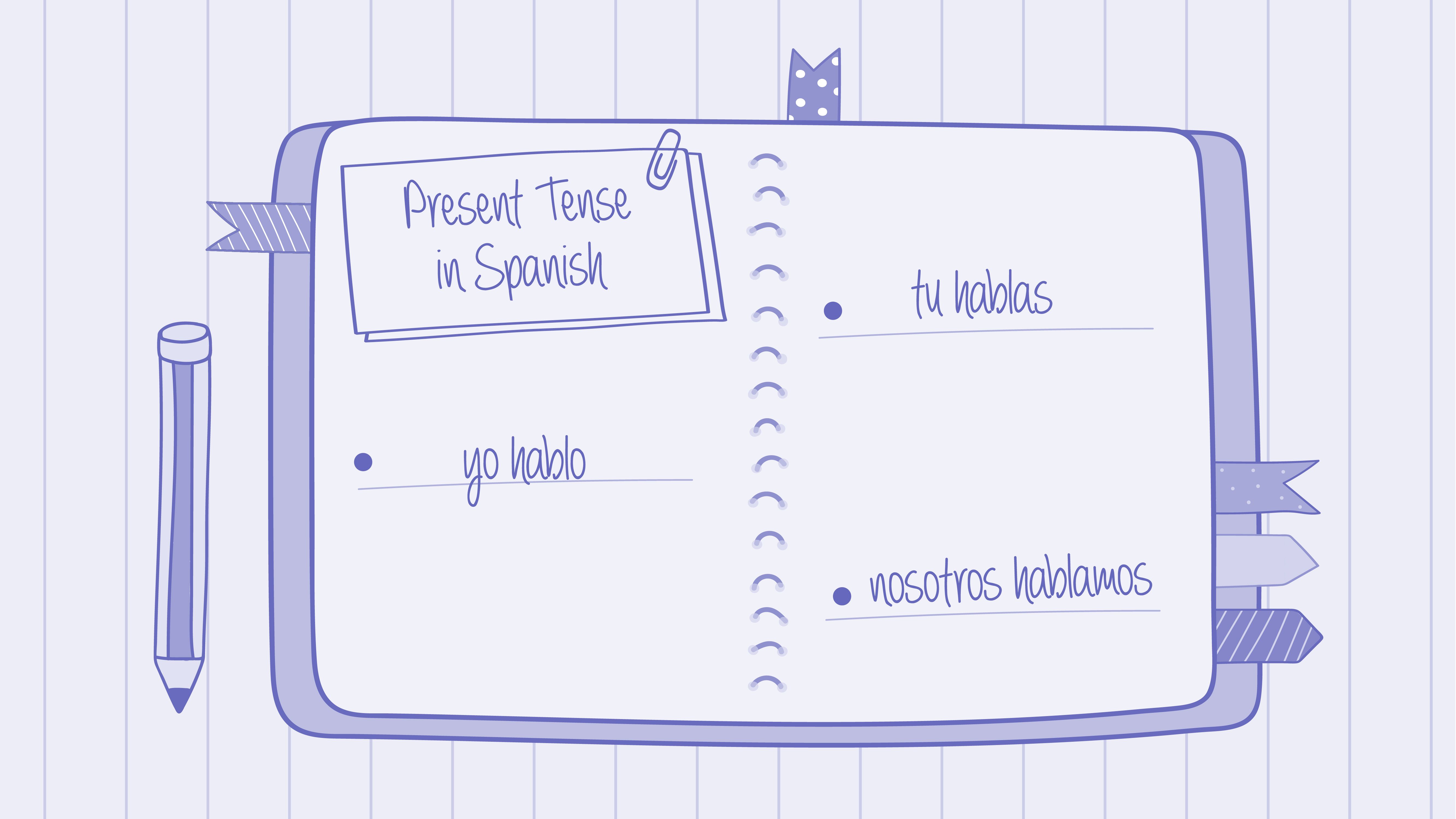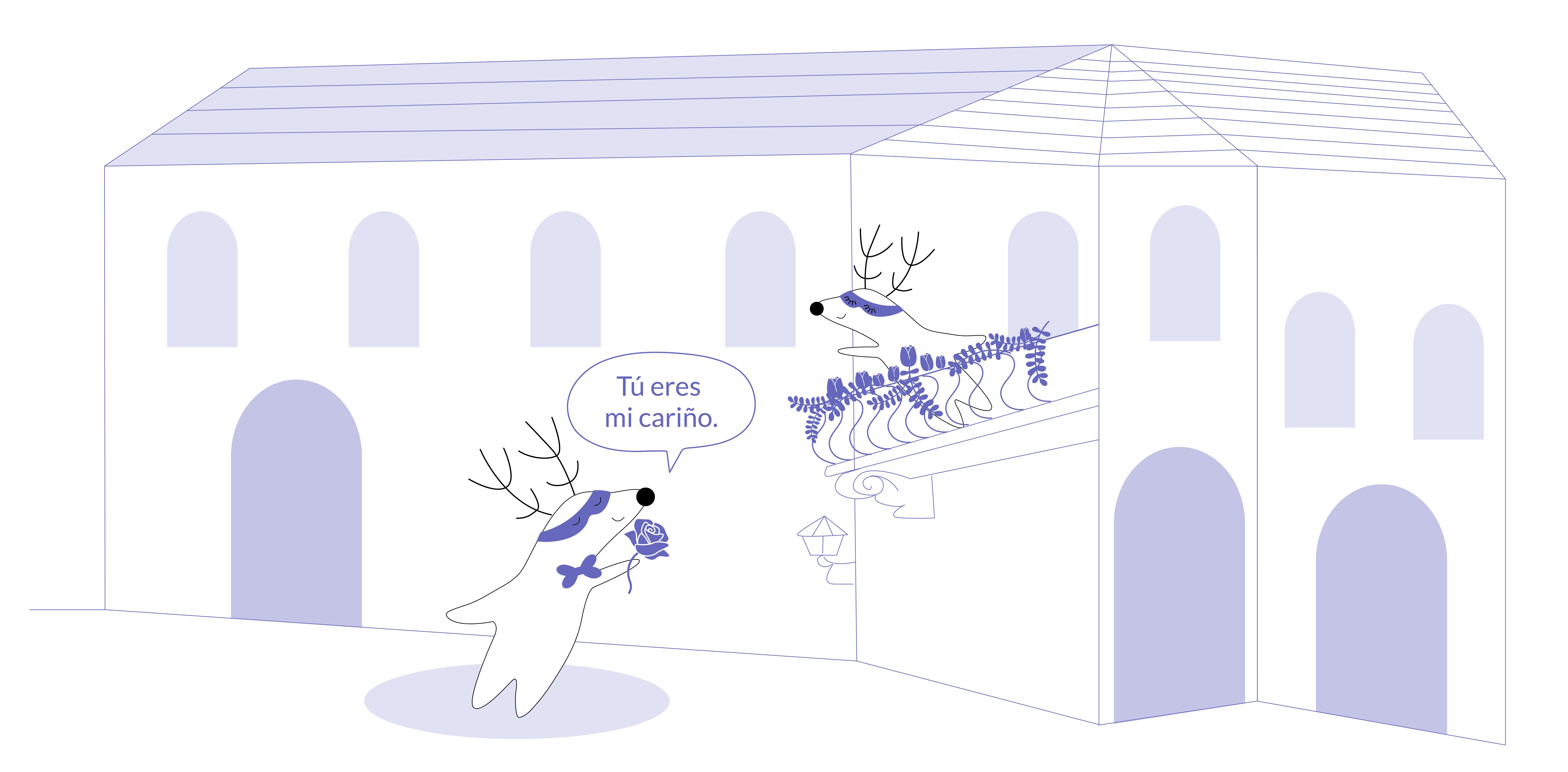
Do you often find yourself puzzled by the present tense in Spanish? You're not alone. Mastering the Spanish present tense with its regular and irregular verbs, can be a daunting task, especially when you encounter those tricky irregular verbs.
But fear not! This comprehensive guide is here to shed light on the ins and outs of the present tense, so you can speak Spanish like a native.
In the Spanish language, the present tense is more than just a grammatical term; it's the key to unlocking meaningful conversations and understanding the culture. From ordering a cup of coffee to discussing your hobbies, the present tense serves as a fundamental tool in day-to-day interactions.
Whether it's regular or irregular verbs you're grappling with, this article will provide you with the necessary knowledge and confidence to navigate through the complexities of the Spanish present tense. So, let's dive into the fascinating world of Spanish present tense and make learning an enjoyable journey!
Learn Spanish with Langster
Understanding the Basics of Spanish Present Tense
In general terms, the present tense is a verb tense that describes actions currently happening, general truths, or recurring actions. It's like taking a snapshot of the current moment. For example, in English, we say "I write" or "they run."
In Spanish, the present tense is used similarly but with a more intricate system of verb conjugations. Spanish verbs are conjugated according to the subject of the sentence, which means the ending of the verb changes to correspond with the subject.
Regular Verbs in Spanish

Spanish verbs are categorized into three types based on their infinitive endings: -ar, -er, -ir.
Let's look at how regular verbs in these categories are conjugated in the present tense:
ar verbs:
| Hablar | to speak |
|---|---|
| Yo hablo | I speak |
| Tú hablas | You speak |
| Él, Ella habla | He, She speaks |
| Nosotros, Nosotras hablamos | We speak |
| Ellos, Ellas, Ustedes hablan | They, You speak |
| Hablar | to speak |
|---|---|
| Yo hablo | I speak |
| Tú hablas | You speak |
| Él, Ella habla | He, She speaks |
| Nosotros, Nosotras hablamos | We speak |
| Ellos, Ellas, Ustedes hablan | They, You speak |
er verbs:
| Comer | to eat |
|---|---|
| Yo como | I eat |
| Tú comes | You eat |
| Él, Ella come | He, She eats |
| Nosotros, Nosotras comemos | We eat |
| Ellos, Ellas comen | They, You eat |
| Comer | to eat |
|---|---|
| Yo como | I eat |
| Tú comes | You eat |
| Él, Ella come | He, She eats |
| Nosotros, Nosotras comemos | We eat |
| Ellos, Ellas comen | They, You eat |
ir verbs:
| Vivir | to live |
|---|---|
| Yo vivo | I live |
| Tú vives | You live |
| Él, Ella vive | He, She lives |
| Nosotros, Nosotras vivimos | We live |
| Ellos, Ellas viven | They, You live |
| Vivir | to live |
|---|---|
| Yo vivo | I live |
| Tú vives | You live |
| Él, Ella vive | He, She lives |
| Nosotros, Nosotras vivimos | We live |
| Ellos, Ellas viven | They, You live |
Irregular Verbs in Spanish
Not all Spanish verbs follow the regular conjugation patterns. A significant number of them are classified as irregular verbs. These verbs undergo more complex changes in their stems or endings when conjugated.
In other words, they don't adhere to the ir conjugation rules that we outlined earlier. Learning these irregular verbs might seem daunting at first, but with practice, they become easier to remember.
Here's the present tense conjugation for ir:
| Yo voy | I go |
| Tú vas | You go |
| Él/Ella/Usted va | He/She/You (formal) goes |
| Nosotros/nosotras vamos | We go |
| Ellos/Ellas/Ustedes van | They/You (plural) go |
| Yo voy | I go |
| Tú vas | You go |
| Él/Ella/Usted va | He/She/You (formal) goes |
| Nosotros/nosotras vamos | We go |
| Ellos/Ellas/Ustedes van | They/You (plural) go |
As you can see, ir doesn't stick to the usual -ir verbs ending pattern. Instead, it transforms completely in the present tense, without any specific verb endings to learn.
And, ir is not the only one. There are many other irregular verbs like ser (to be), tener (to have), hacer (to do/make), etc., which also have unique conjugation patterns. It's important to be aware of these verbs and practice them regularly. Over time, they will become second nature.
Contrasting With Other Tenses

The present tense should not be confused with other tenses like the preterite (past) or future. Let's have a look at a few example sentences:
Spanish
English
Yo hablo
I speak
Yo hablé
I spoke
Yo hablaré
I will speak
Understanding the Spanish present tense is fundamental for communicating effectively in Spanish. It's the starting point from which you can explore other tenses and enrich your grasp of this beautiful language.
Stem-Changing Verbs in Spanish Present Tense
In your journey to master the present tense in Spanish, you'll encounter a special group of verbs known as stem-changing verbs. Unlike regular verbs, these verbs undergo a vowel change in their stem (the part of the verb that remains after removing the -ar, -er, -ir ending) when they are conjugated.
What are Stem-Changing Verbs?
Stem-changing verbs, also known as “boot verbs” or “shoe verbs,” experience a vowel shift in their stem in all forms except nosotros/nosotras.
There are three main types of stem changes:
- e to ie,
- o to ue,
- e to i.
Patterns in Stem-Changing Verbs and Examples
E to IE
The verb pensar (to think) becomes pienso in the first person singular.
| Yo pienso | I think |
| Tú piensas | You think |
| Él, Ella piensa | He, She thinks |
| Nosotros, nosotras pensamos | We think |
| Ellos, Ellas, Ustedes piensan | They, You think |
| Yo pienso | I think |
| Tú piensas | You think |
| Él, Ella piensa | He, She thinks |
| Nosotros, nosotras pensamos | We think |
| Ellos, Ellas, Ustedes piensan | They, You think |
O to UE
The verb dormir (to sleep) changes to duermo in the first person singular.
| Yo duermo | I sleep |
| Tú duermes | You sleep |
| Él, Ella duerme | He, She sleeps |
| Nosotros/nosotras dormimos | We sleep |
| Ellos, ellas, Ustedes duermen | They, You sleep |
| Yo duermo | I sleep |
| Tú duermes | You sleep |
| Él, Ella duerme | He, She sleeps |
| Nosotros/nosotras dormimos | We sleep |
| Ellos, ellas, Ustedes duermen | They, You sleep |
E to I
The verb pedir (to ask for) changes to pido in the first person singular.
| Yo pido | I ask for |
| Tú pides | You ask for |
| Él, Ella pide | He, She asks for |
| Nosotros, nosotras pedimos | We ask for |
| Ellos, Ellas, Ustedes piden | They, You ask for |
| Yo pido | I ask for |
| Tú pides | You ask for |
| Él, Ella pide | He, She asks for |
| Nosotros, nosotras pedimos | We ask for |
| Ellos, Ellas, Ustedes piden | They, You ask for |
Strategies to Master Stem-Changing Verbs

Mastering stem-changing verbs in the Spanish simple present tense requires practice and memorization. Here are a few strategies to help you along:
- Group similar verbs together. Learning verbs in groups that share the same stem change can make it easier to remember the patterns.
- Practice with sentences. Using these verbs in context helps reinforce their conjugations. Try writing sentences or short stories using stem-changing verbs.
- Regular practice. Regular and consistent practice is key. Use flashcards, apps, or practice exercises to review each verb stem and ending frequently.
As you continue to study and conjugate verbs in the present tense, you'll find that these seemingly complex patterns start to become second nature. And remember, every step forward, no matter how small, brings you closer to fluency in Spanish.
Tips and Tricks for Mastering the Spanish Present Tense
Mastering the Spanish present tense is a crucial step in your language-learning journey. It's the foundation on which you'll build your understanding of past and future tenses, and it's essential for basic communication in Spanish.
Here are some effective learning strategies, resources, and tools to enhance your understanding and retention, as well as common mistakes to avoid.
Effective Learning Strategies
- Daily practice. Consistency is key when learning a new language. Spend time each day practicing the Spanish present tense, whether through exercises, conversation, or writing practice.
- Use flashcards. Flashcards are effective for memorization. Write the infinitive form on one side and the conjugated forms on the other. Review these regularly to help the conjugations stick in your memory.
- Contextual learning. Use the verbs in context. Write sentences or short stories using the verbs you're learning. This not only helps with memorization but also improves your overall language skills.
- Group study. Consider studying with a group. This allows for conversation practice and immediate feedback, so you can learn from others' mistakes and successes.
- Online exercises. There are numerous online platforms with interactive exercises to practice verb conjugation. Regularly practicing with these tools can significantly improve your grasp of the Spanish present tense.
Resources and Tools
- Language learning apps. Apps like Duolingo, Rosetta Stone, and Langster offer comprehensive lessons on Spanish verb tenses, including the present tense.
- Online courses. Websites like Coursera and Udemy offer courses specifically focused on Spanish verb tenses. These courses often include video lessons, quizzes, and opportunities to interact with instructors and fellow students.
- Spanish grammar books. Books such as Practice Makes Perfect: Complete Spanish Grammar and Easy Spanish Step-By-Step provide in-depth explanations and exercises for mastering Spanish verb tenses.
- Online dictionaries. Online dictionaries like WordReference not only provide translations but also verb conjugation tables. This can be a handy tool when you're unsure about how to conjugate a verb.
Common Mistakes to Avoid
- Incorrect verb endings. One of the most common mistakes is using the wrong verb ending. Remember, Spanish verbs change their endings based on the subject. Make sure to memorize the different endings for -ar, -er, and -ir verbs.
- Ignoring stem changes. Some verbs change their stem in the present tense. Don't forget these changes when conjugating stem-changing verbs.
- Overgeneralizing rules. While there are patterns and rules in Spanish verb conjugation, there are also many exceptions. Avoid assuming that all verbs follow the regular conjugation pattern.
- Confusing ser and estar. Both mean "to be," but they're used in different contexts. Remember, ser is used for permanent or lasting attributes, while estar is used for temporary states or locations.
- Direct translation from English. This often leads to errors, because the sentence structures and verb usage can differ significantly between the two languages.
Remember, it's okay to make mistakes while learning. They are opportunities for improvement. With consistent practice, the use of effective resources and tools, and an awareness of common mistakes, you'll be well on your way to mastering the Spanish present tense.
It may take time and effort, but the result is worth it: the ability to communicate effectively in another language. So, keep practicing, stay patient with yourself, and celebrate your progress along the way.
The Bottom Line

In conclusion, mastering the Spanish present tense is an attainable goal with the right resources, strategies, and dedication. As we've seen, there are various online platforms that offer comprehensive lessons on Spanish verb tenses, including the present tense. They employ a variety of techniques to make learning engaging and fun.
However, the most effective language learning often happens when you're able to connect new knowledge to real-world contexts. For this reason, it's highly recommended to supplement your studies with an app like Langster.
Langster offers a unique approach to learning Spanish by integrating real-life stories into its lessons. It provides an immersive experience that allows you to understand how the language is used in everyday situations. This not only makes learning more interesting but also helps you retain information better, because you're learning the present tense in context.
Learn Spanish with Langster









